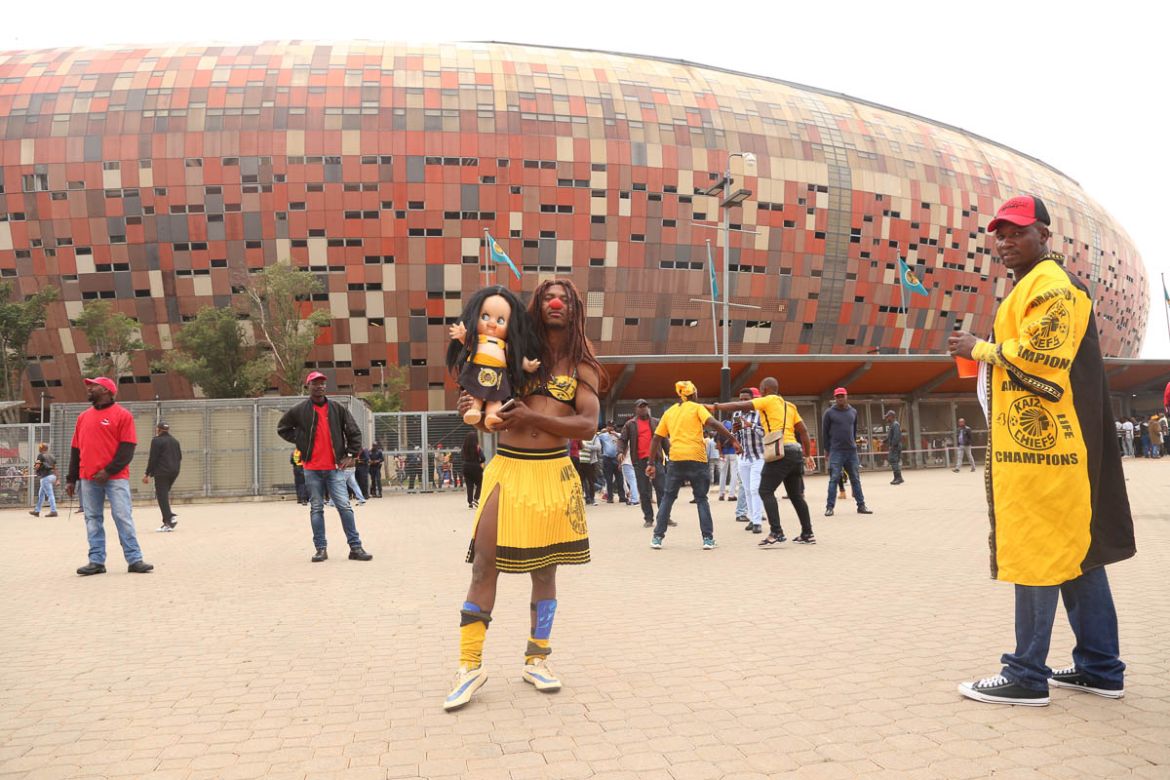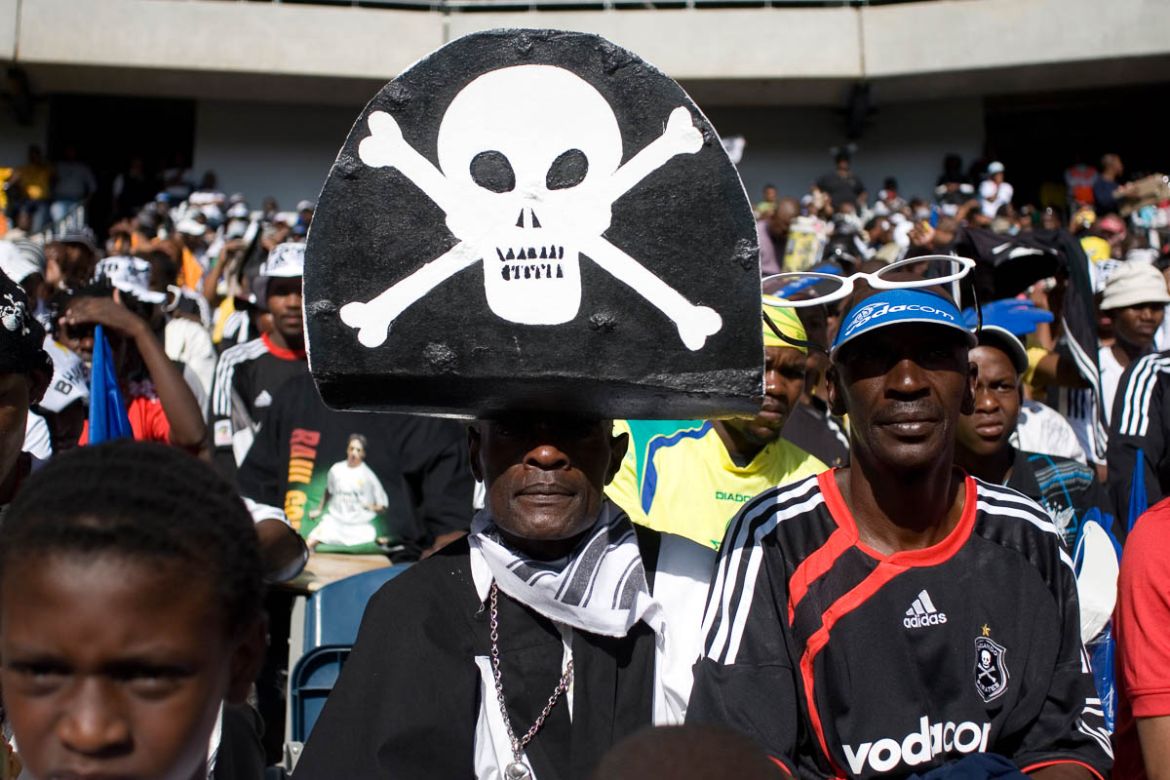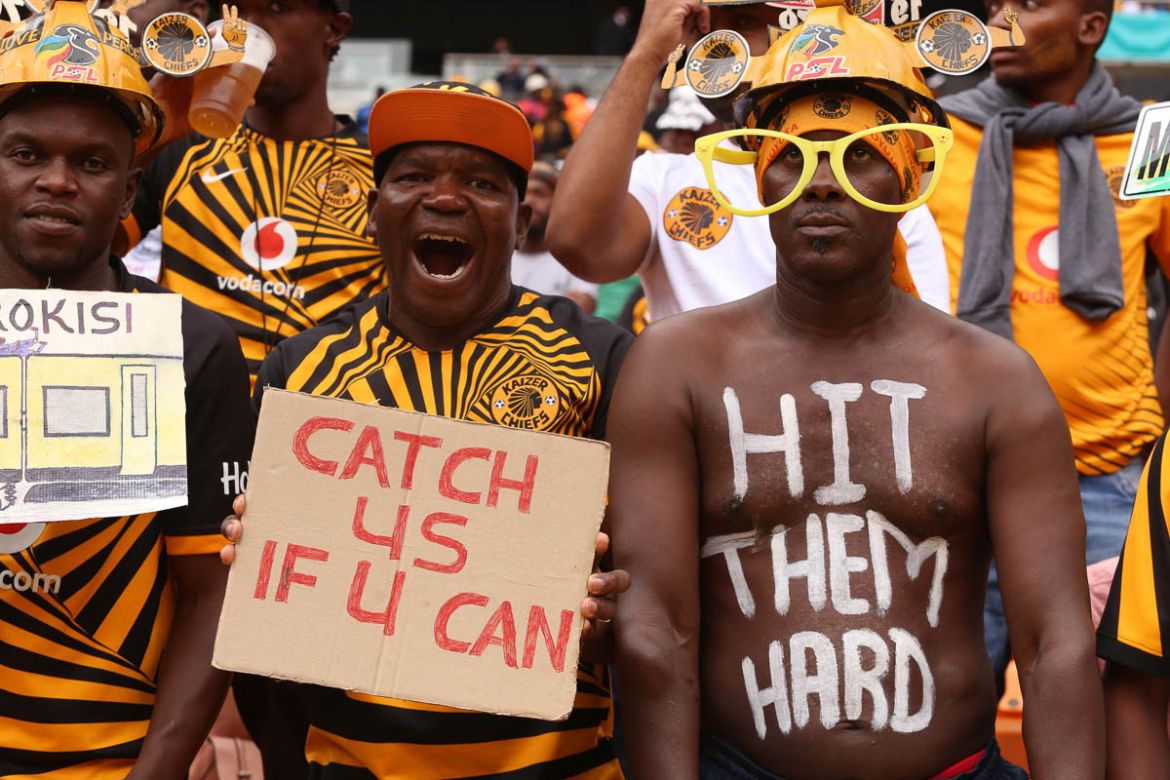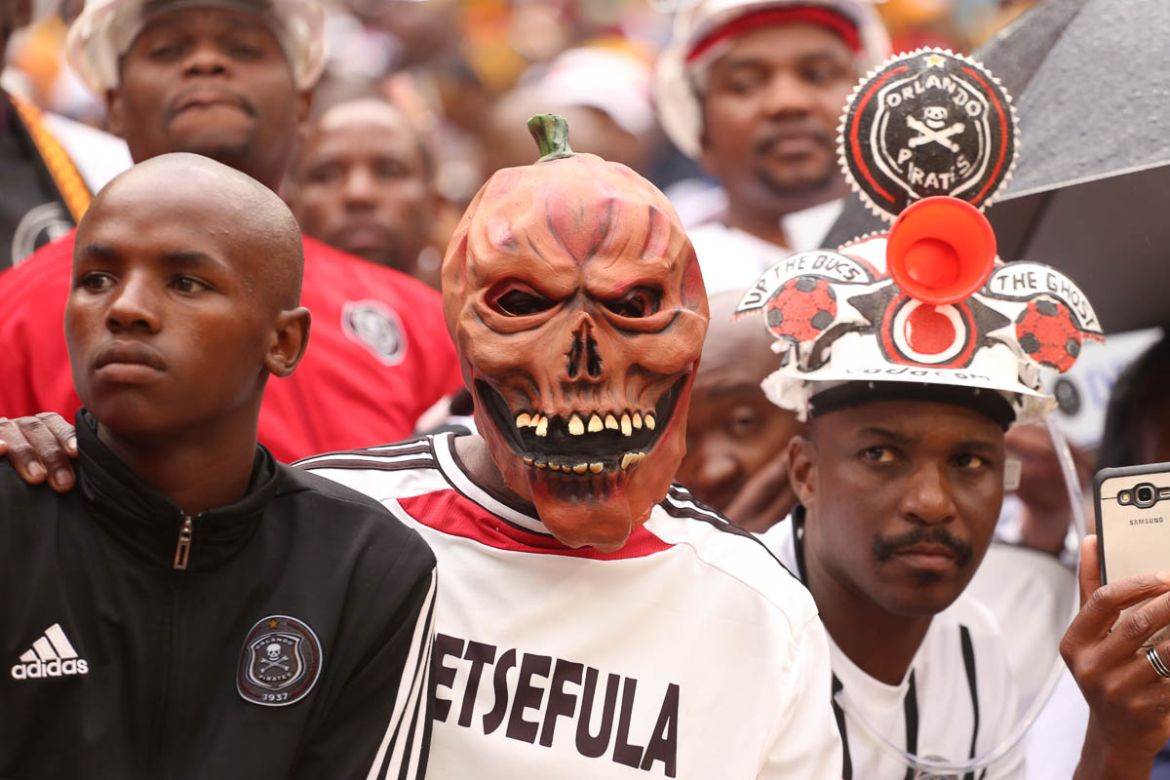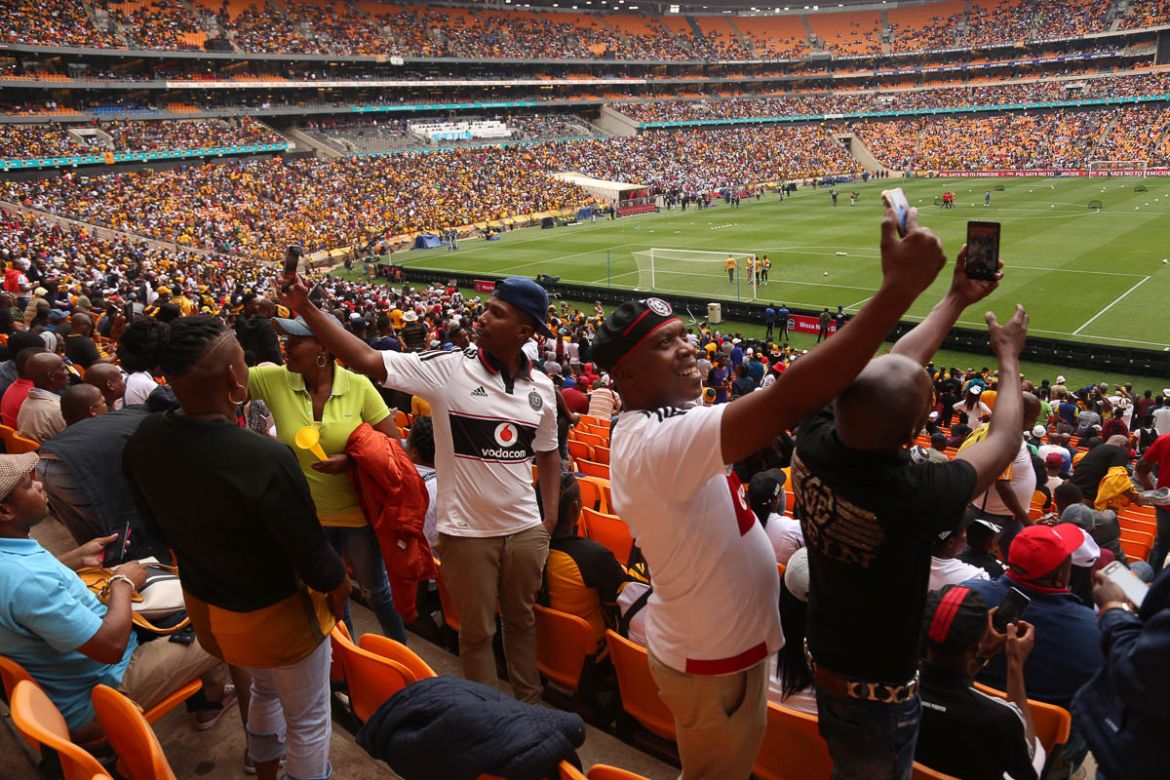In Pictures
Soweto spectacle: Fans and football heroes in South Africa
Fifty years of intense sporting rivalry and fan devotion have followed local teams Orlando Pirates and Kaizer Chiefs.
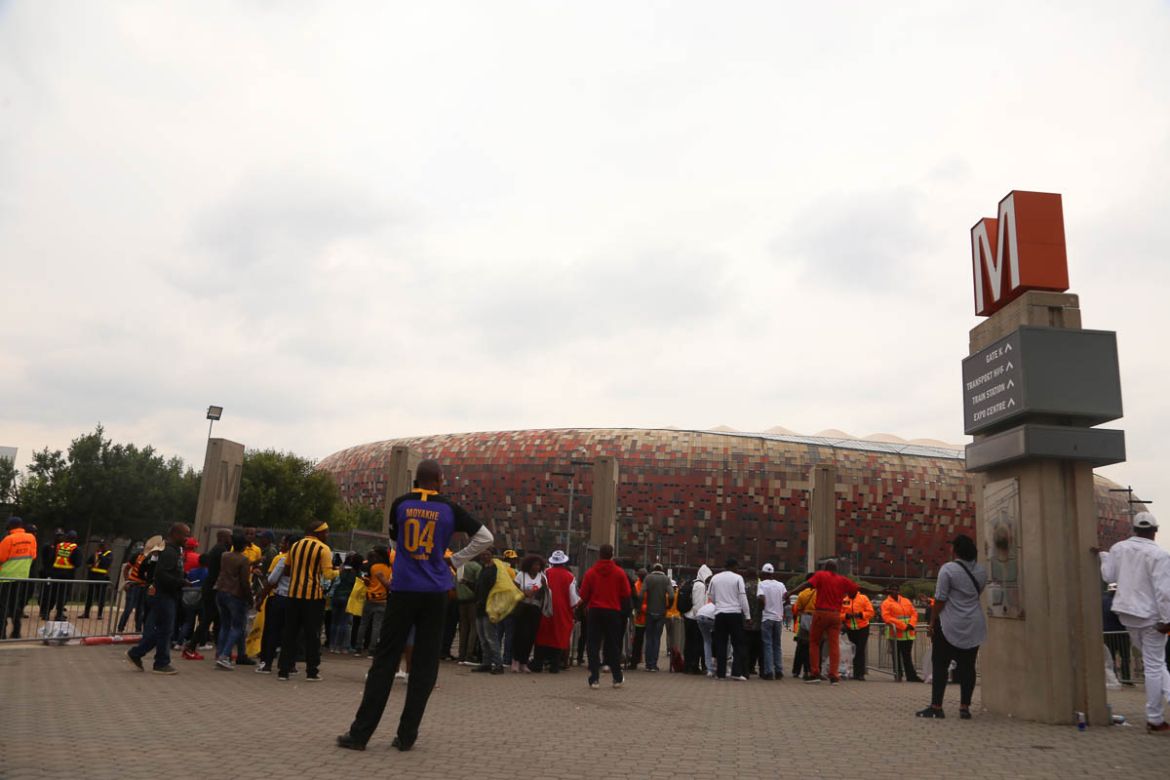
Soweto, South Africa – “I’m going to the cathedral,” says football fan Kenneth Metiba, whose fan name is “Long John Silver” – adopted as a nod to the fictional pirate in Robert Louis Stevenson’s novel, Treasure Island. “I’m the king of the Pirates,” he adds proudly, referring to the Orlando Pirates, a giant among South African football clubs for more than 80 years.
It was the last day of February at the near-packed 90,000 seater FNB Stadium nestled between downtown Johannesburg and Soweto – and the 50th anniversary of the iconic spectacle known as the Soweto Derby.
The tournament pits the Orlando Pirates – fondly called the Buccaneers – against their main rival Kaizer Chiefs, or “Amakhosi” (Zulu for lords or chiefs). Since the first game between the two teams in 1970, they have gone head-to-head more than 168 times.
Long John Silver, now in his 60s, is one of the Derby’s most die-hard fans. He collects any and all types of memorabilia associated with pirates. On the day of the Derby, he sports his trademark samurai sword and a toy pistol strapped onto his waist. He could easily pass for an extra from the movie Pirates of the Caribbean.
For him, the Derby is a cathedral whose revered status and devoted patrons put it in league with some of the fiercest football rivalries in the world.
The theatrics on display in the stands of a Pirates vs Chiefs game are no less spectacular than those in a real cathedral.
The fans – people of different ages and backgrounds – are a sea of colourful enthusiasm and zeal. Amakhosi supporters wear gold and black and often flash a two-finger peace sign (they see themselves as the epitome of peace and love).
Meanwhile, Pirates fans wear their trademark black and white and adopt a crossed-hands signal as a hallmark of sea pirates.
Every once in a while, there is a thunderous cacophony from the crowds in the stands. There are dozens of songs in support of both teams, all seemingly well-rehearsed and choreographed – performed in unison so many times that the rhythms now come naturally.
But what stands out most are the unique ways of dressing and the paraphernalia among the ecstatic crowd.
Some Pirates fans hold watermelons, one has a huge loaf of bread; this is meant to send a strong message to Chiefs fans that they will be “eaten up”. Some fans wear preachers’ gowns and carry Bibles, which they sometimes read from when their favourite player misses a goal.
Some male Pirates fans wear skirts and bras, channelling the strength of a woman and signifying that the Buccaneers are the “mother” of all clubs. Just behind the Chiefs goalkeeper, other fans burn incense sticks – locally called “impepho” – used by South African traditional healers to communicate with the deceased or connect the living with their ancestors.
From start to finish, the spectacles and rituals come out to play until the final whistle ends the game – on this occasion handing Kaizer Chiefs a 1-0 victory over Orlando Pirates.
Long John Silver is such a devout supporter of the Pirates that when they lose a match, he is distraught and does not eat for the rest of the day. His weekly plans are determined by the Professional Soccer League’s match schedule: When his team plays, he says he cannot miss the game. Like other supporters, he frequently travels to away games and follows the team wherever they play – an expensive venture for many.
The first Soweto Derby took place in 1970, soon after the Kaiser Chiefs formed. The team was founded by Kaizer Motaung, who at the time played for the Pirates. But after some of his colleagues were expelled from the team, he left and together they formed the Kaizer Chiefs.
The Orlando Pirates has an older history, dating back to 1937. It was formed by the coming together of black players from Soweto who were not allowed to play for white clubs during apartheid.
On game days, multitudes of people wait by the stadium gates, desperate for tickets that are often sold out. Traffic moves at a snail’s pace and there is a heavy police presence, assisted by private security, a reminder of past stampedes where people have been injured.
The Derby remains a marquee event on the South African sporting calendar. And, for the fans – many of whom see themselves as the 12th player on the team – no other event can match it.
